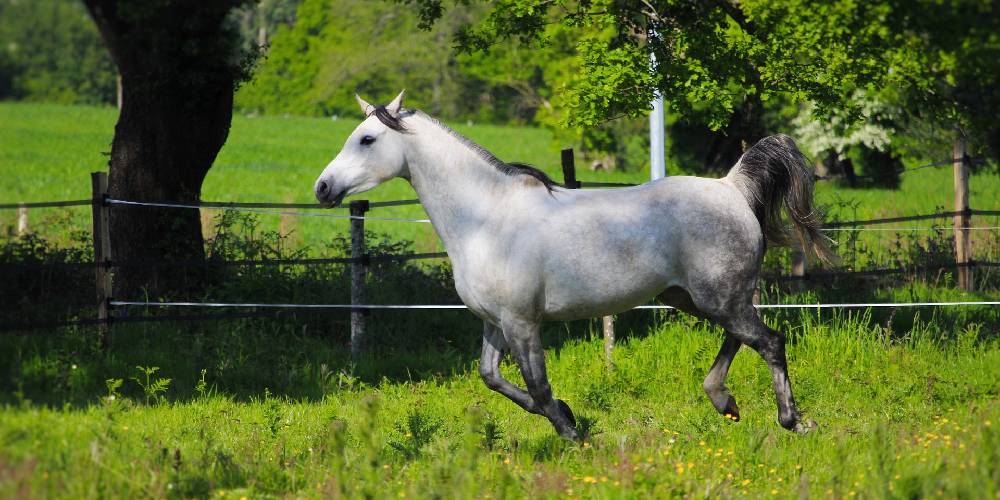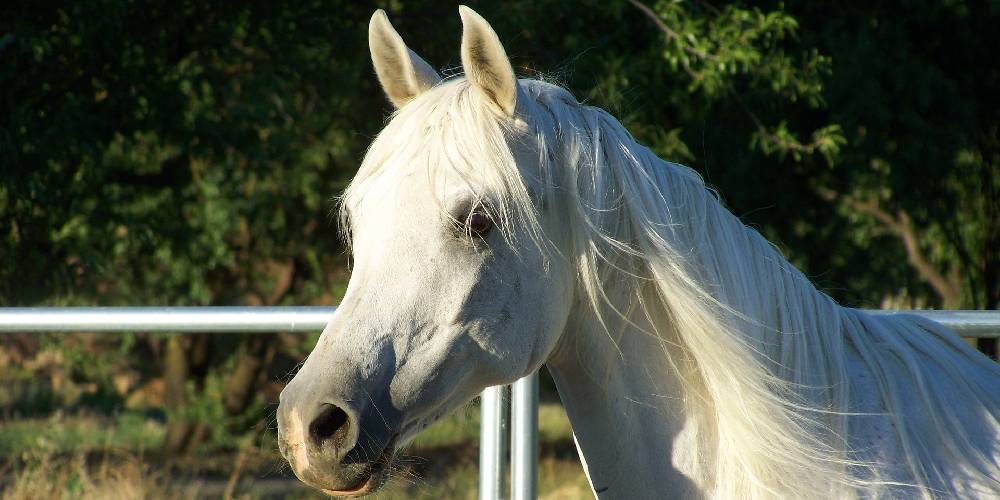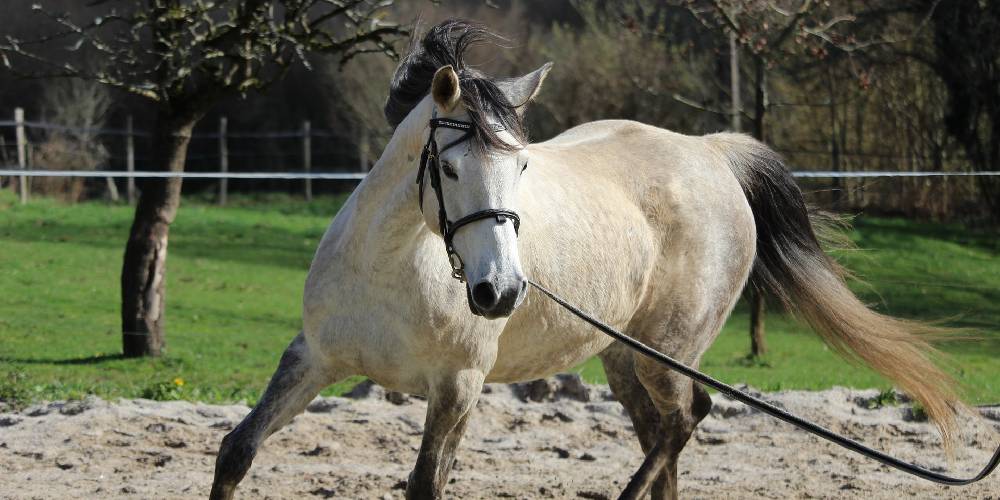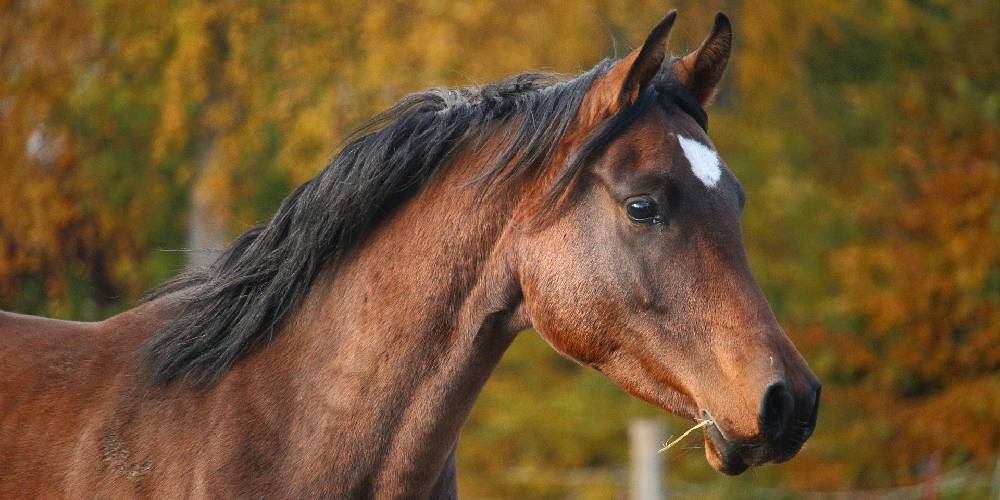I was attending the Scottsdale Arabian Horse Show a few years back when I noticed the announcer calling a class for half Arabians and Anglo Arabians. I was confused because I hadn’t ever really heard of what an Anglo Arabian was. Reading up on it, I also learned that there are horses known as Shagya Arabians, as well as some known as Morabs. I realized that it can’t be just me who gets confused with all these Arabians running around so, once finding out the difference, I created this post in hopes to help anyone who is as confused as I was.
What Is An Anglo Arabian?

An Anglo Arabian is basically a Thoroughbred crossed with an Arabian. These horses must carry at least 25% Arabian blood to be considered a true Anglo Arabian. The breeding of these horses started in the 1800s primarily in the country of France. The goal with crossing these horses was to get an attractive horse with traits from both breeds. The stamina and toughness was desired out of the Arabian, and the jumping ability and speed was desired out of the Thoroughbred. If these traits are both brought to the surface, then an excellent event and showjumping horse could be created.
Are There Multiple Types Of Anglo Arabians?
As far as I know, there are two types of Anglo Arabians, one being the normal Anglo Arabian, and the other being the French Anglo Arabian. The difference between these horses is basically their origins. Though both came originally from France, the French almost specialized in the creation of this horse, making it more selectively bred in that country.
How Big Are They Compared To Normal Arabians?
The Anglo Arabian, thanks to its Thoroughbred blood, stands between 15.2 and 16.3 hands high. this makes them much larger than the average pure Arabian who stands around 15 hands high.
Both of these horses weigh around 1,000 pounds on average though the purebred Arabian can weigh as low as 800 pounds and the Anglo Arabian can weigh as much as 1,200 pounds.
What Are They Used For?
Both Arabians and Thoroughbreds make excellent show horses. These horses are mainly used for competition and show. Carrying the Arabians bravery and stamina, and the Thoroughbred’s speed and jumping ability, they are very popular in eventing, showjumping, dressage, cross country, and other English riding classes. They also can make great western pleasure horses and are sometimes seen ridden in the western style (though English is much more popular).
How Can I Tell Them Apart From Other Arabians?
Anglo Arabians stand out because they lack much of the Arabian’s delicate features such as the dished face and the extremely high tail carriage (some Anglo Arabians may have the high tail carriage). They should look exactly between the Thoroughbred and the Arabian in appearance. They are naturally taller than other Arabians as well so even their height can set them apart.
What Is A Shagya Arabian?

A Shagya Arabian is the Hungarian version of the Arabian. They get their name from the founding stallion of the breed who was known as Shagya. These Arabians were bred in Hungary all the way back in the 1800s where the Hungarian people wanted to create a heavier version of the Arabian horse. They did this through crossing Hungarian horses with Arabians to get horses that were heavier and stronger, but still carried all the Arabian’s great traits.
Are There Multiple Types Of Shagya Arabians?
There is really only one true Shagya Arabian Horse. These mainly descended from the stallion known as Shagya, though there are many other bloodlines in the breed descending from other stallions.
How Big Are They Compared To Normal Purebred Arabians?
The Shagya Arabian is generally the same size as the purebred Arabina when looking at the height of these horses.
Thanks to its slightly heavier build, the Shagya Arabian weighs more than the purebred Arabian. The purebred Arabian weighs around 1,000 pounds where the Shagya Arabian weighs around 1,100 pounds.
What Are They Used For?
Shagya Arabians are a rare breed making them uncommon to see in show rings just based on their low numbers. Despite their population disadvantages, the Shagya Arabian still makes a name for itself in the show ring in hunter, jumping, dressage, and more.
How Can I Tell Them Apart From Other Arabians?
These horses can be told apart from other Arabians in two ways. Because Shagya was a gray horse, much of his progeny are gray making gray the primary color of the breed. Not only can they be distinguished by their color, but they can also be distinguished by their build as they are much heavier than your average Arabian.
What Is A Half Arabian?

A half Arabian is any breed of horse crossed with the Arabian breed to make a half-bred horse. The most common crosses with Arabians are Quarter Horses, Saddlebreds, and Thoroughbreds (as I mentioned earlier).
Are There Multiple Types Of Half Arabians?
There are so many different types of half-Arabians in the world as a horse is considered half Arabian if any horse is crossed with an Arabian. Like I said previously, the most common crosses are between Arabians and Quarter Horses, Thoroughbreds and Saddlebreds
How Big Are They Compared To Normal Purebred Arabians?
The height and weight of a half Arabian strictly depends on what horse they are crossed with. An example would be that a Quarter Horse Arabian cross is going to be much smaller than a Percheron Arabian Cross.
What Are They Used For?
These horses can be used for virtually everything. Some of the things thay are good at include:
- Saddleseat
- Sidesaddle
- Driving
- Reining
- Roping
- Barrel Racing
- Western Pleasure
- Bronc Riding
- Hunter Pleasure
- Showjumping
- Dressage
- Cross Country
- Eventing
- Polo
- Ranch Riding
- Goat Tying
- And anything else that I missed!
How Can I Tell Them Apart From Other Arabians?
Half Arabians should look somewhat Arabian but have noticeable differences setting them apart from the purebred Arab. The Quarter Horse Arabian cross for example will be more mellow in temperament than the Arabian and will be heavier built. They won’t have as refined pronounced Arab features, but there might be tail carriage and a dished face, but this is not promised. This goes for nearly any Arabian cross.
What Is A Morab?

A Morab is a cross between the Morgan Horse and the Arabian horse. (This can be remembered based on their name in case you forget). This breed was developed in the 1800s as a riding and trotting horse. One of the founding sires of the breed was a horse named Golddust. This stallion had 302 foals before he was killed in the Civil war which gave the breed a good head start in populating and becoming well known. Unlike their Arabian cousins, Morabs are calm and mellow horses.
Are There Multiple Types Of Morabs?
There really aren’t many variations to the breed other than that they are different from Arabians thanks to their Morgan blood.
How Big Are They Compared To Normal Arabians?
Surprisingly, Morabs are smaller than some Arabians and only stand between 14.2 and 15.2 hands high. Some Arabians are known to stand taller than this even.
The usualy weight for a Morab is just over 1,000 poounds thanks tho their Morgan bloodlines.
What Are They Used For?
Morabs are used for many things. Some if these include:
- General Riding
- English Hunter Riding
- Driving
- Trotting
How Can I Tell Them Apart From Purebred Arabians?
The Morab is built heavier than the normal Arabian making them stand out from the Average Arabian. These horses also can be Palomino or Buckskin and still be considered ourebred which is not true for the Purebred Arabian.
The Full Arabian
The Arabian breed is thought to be the oldest horse breed on earth. Threy are popular all over the world and some of the shows held for them are more extravagant than those held for any other breed. To learn about this breed, I have an article poseted all about the Arabian horse.
To access it, click here!

